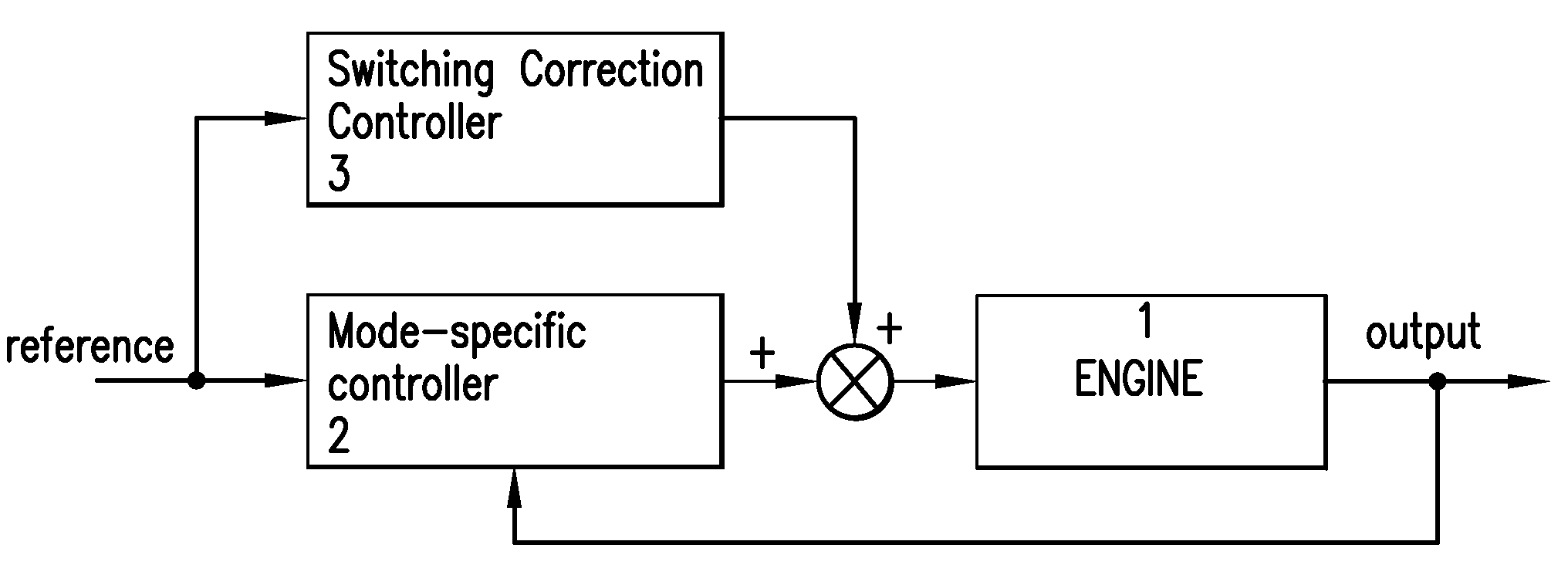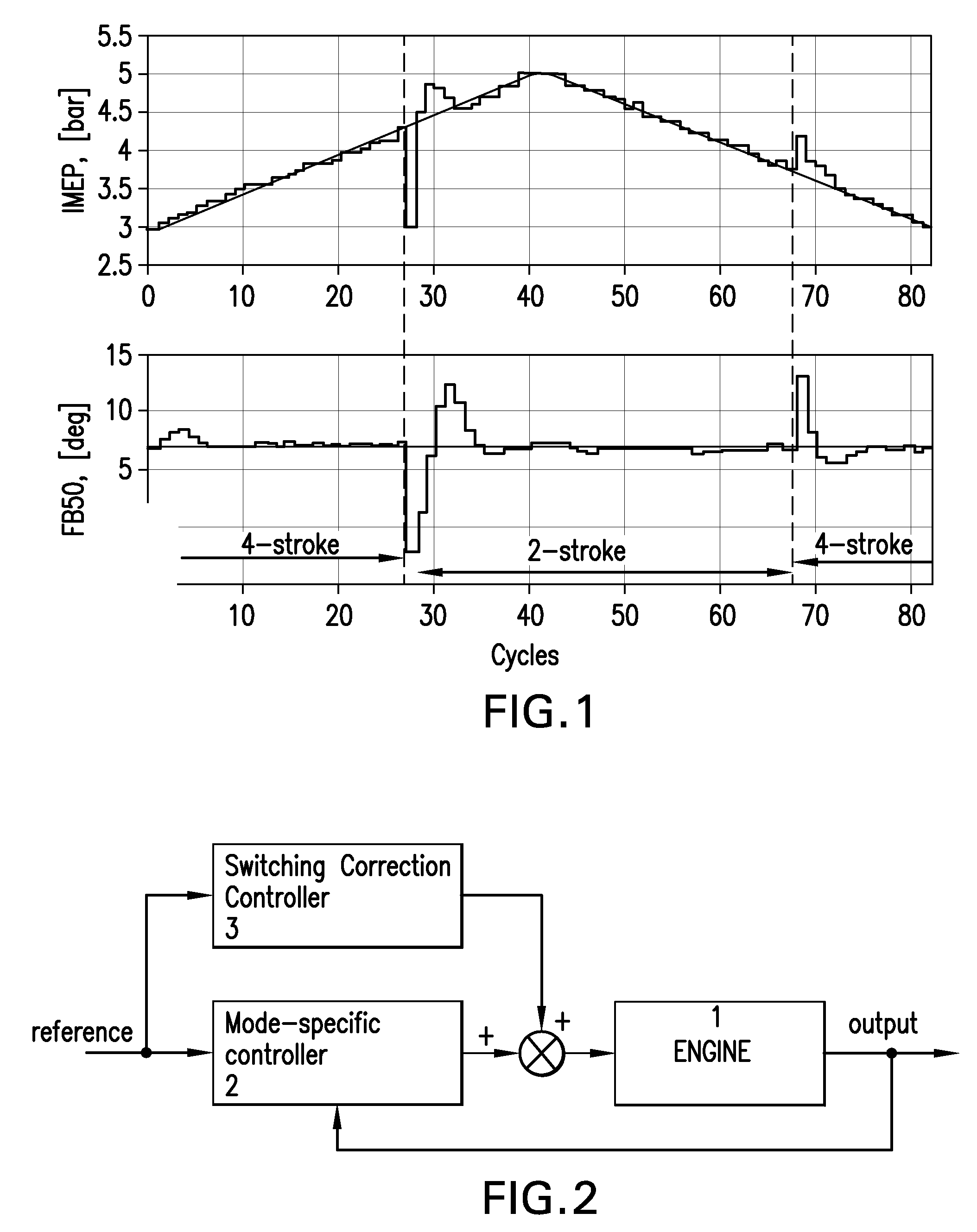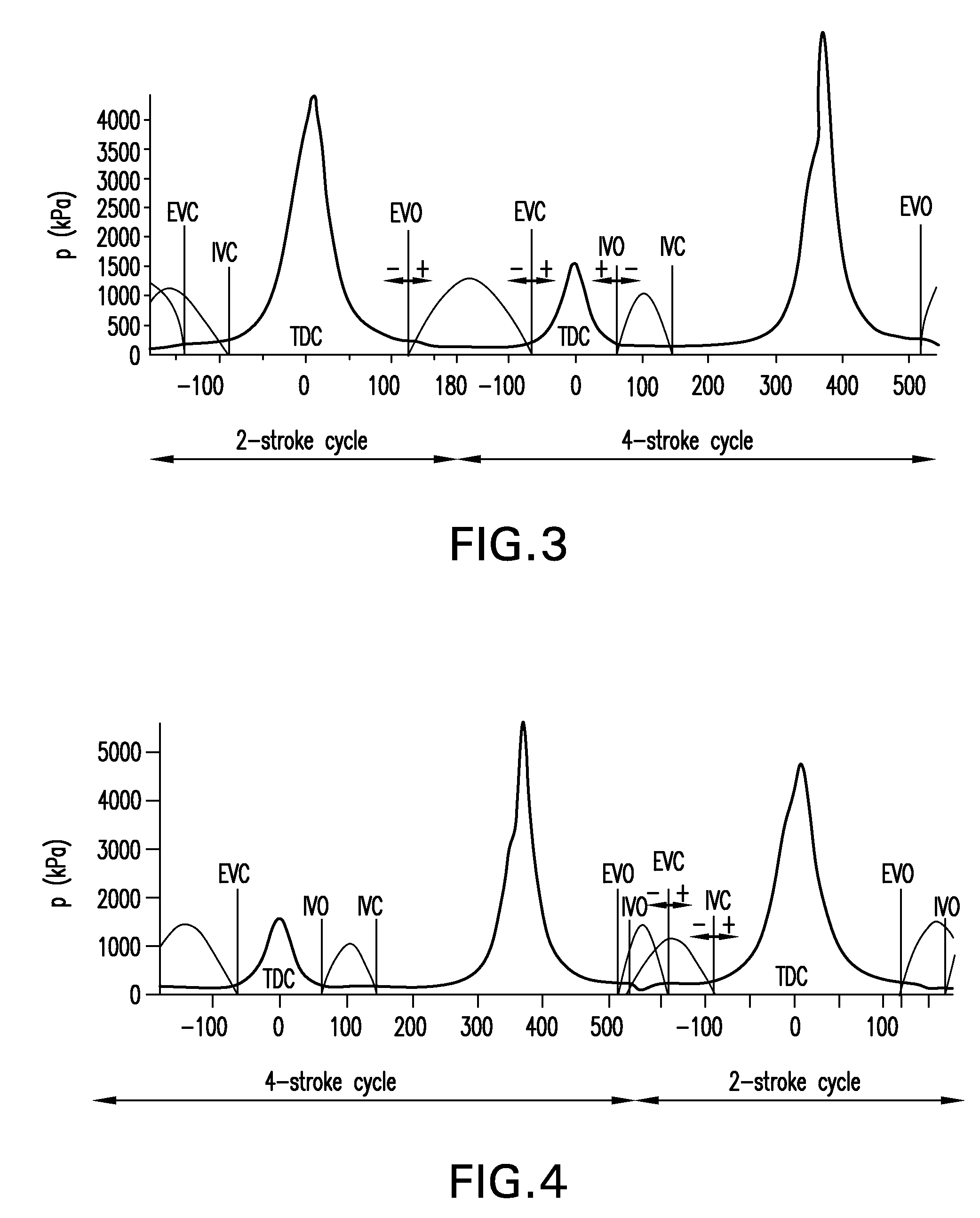Control architecture and optimal strategy for switching between 2-stroke and 4-stroke modes of HCCI operation
a control system and engine technology, applied in the direction of electric control, machines/engines, instruments, etc., can solve the problems of limited work output of the hcci engine and loss of the advantages of the hcci
- Summary
- Abstract
- Description
- Claims
- Application Information
AI Technical Summary
Benefits of technology
Problems solved by technology
Method used
Image
Examples
Embodiment Construction
[0016]As shown in FIG. 1, switching between 2-stroke and 4-stroke modes results in oscillations in engine outputs, i.e., the IMEP (upper chart) and the combustion phasing (lower chart). As mentioned above, the engine is controlled so as to switch between the 2-stroke and the 4-stroke modes at the output in IMEP approximately equal to 4 bar. The combustion phasing in both the 2-stroke and the 4-stroke HCCI modes, as well as during switching, is regulated to 7 degrees TDC and is measured at a middle point of the combustion reaction (denoted in FIG. 1 as “MFB50”). The oscillations occur mainly due to differences in gas temperatures and concentrations of species inside engine cylinder between 2-stroke and 4-stroke modes for a given output. More particularly, in the switching from the 4-stroke to the 2-stroke mode, the first 2-stroke cycle following the last 4-stroke cycle is started with the initial conditions which differ from the initial conditions corresponding to the normal 2-stroke...
PUM
 Login to View More
Login to View More Abstract
Description
Claims
Application Information
 Login to View More
Login to View More - R&D
- Intellectual Property
- Life Sciences
- Materials
- Tech Scout
- Unparalleled Data Quality
- Higher Quality Content
- 60% Fewer Hallucinations
Browse by: Latest US Patents, China's latest patents, Technical Efficacy Thesaurus, Application Domain, Technology Topic, Popular Technical Reports.
© 2025 PatSnap. All rights reserved.Legal|Privacy policy|Modern Slavery Act Transparency Statement|Sitemap|About US| Contact US: help@patsnap.com



